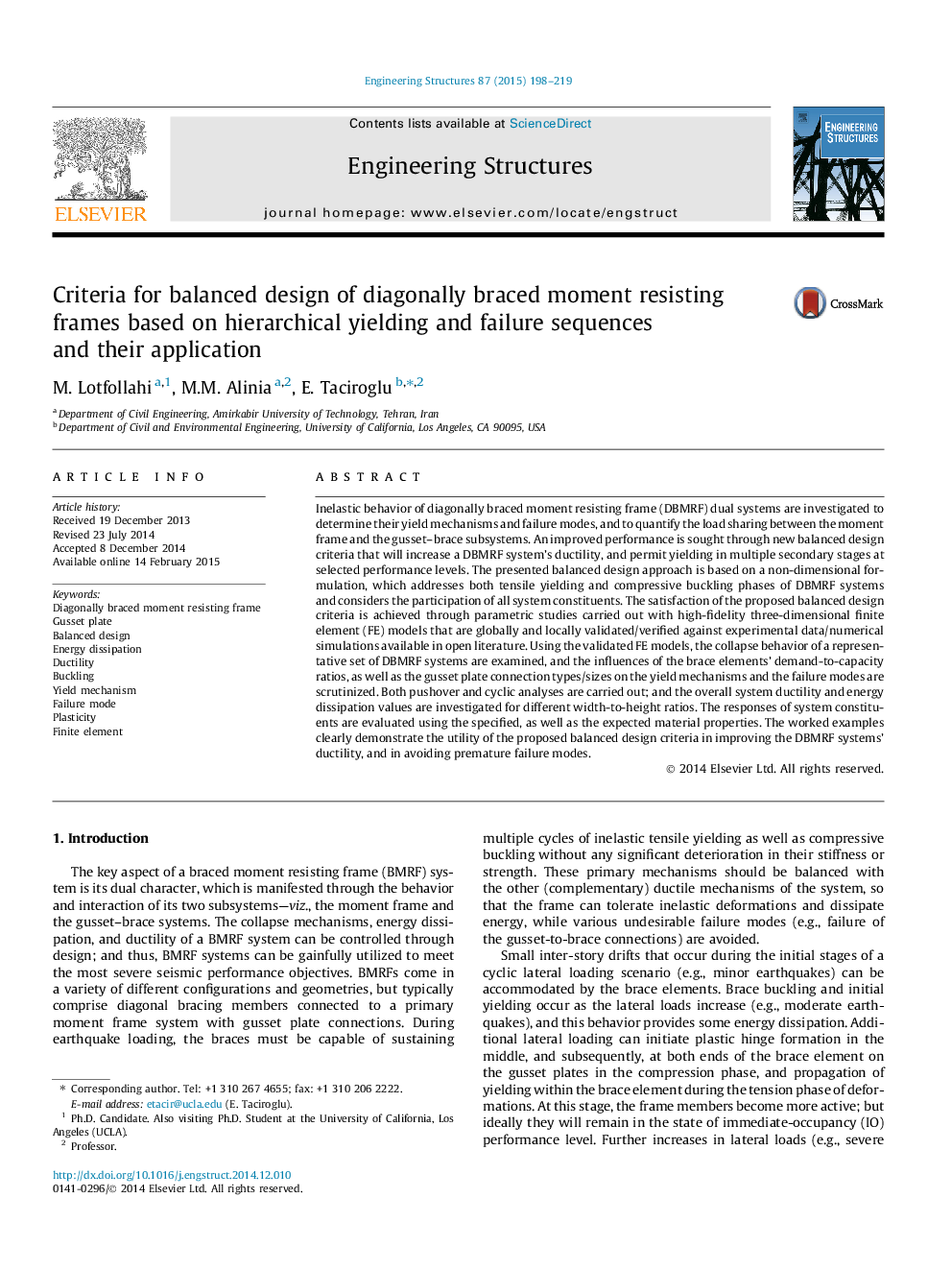| Article ID | Journal | Published Year | Pages | File Type |
|---|---|---|---|---|
| 266425 | Engineering Structures | 2015 | 22 Pages |
•New and improved balanced design criteria for DBMRF systems are proposed.•Proposed criteria are formulated using non-dimensional responses and parameters.•High-fidelity 3D Finite Element Models are utilized to exercise the proposed criteria.•Specified and expected responses under cyclic and monotonic loads are explored.•Participation of all DBMRF constituents in the compression and tension phases are evaluated.
Inelastic behavior of diagonally braced moment resisting frame (DBMRF) dual systems are investigated to determine their yield mechanisms and failure modes, and to quantify the load sharing between the moment frame and the gusset–brace subsystems. An improved performance is sought through new balanced design criteria that will increase a DBMRF system’s ductility, and permit yielding in multiple secondary stages at selected performance levels. The presented balanced design approach is based on a non-dimensional formulation, which addresses both tensile yielding and compressive buckling phases of DBMRF systems and considers the participation of all system constituents. The satisfaction of the proposed balanced design criteria is achieved through parametric studies carried out with high-fidelity three-dimensional finite element (FE) models that are globally and locally validated/verified against experimental data/numerical simulations available in open literature. Using the validated FE models, the collapse behavior of a representative set of DBMRF systems are examined, and the influences of the brace elements’ demand-to-capacity ratios, as well as the gusset plate connection types/sizes on the yield mechanisms and the failure modes are scrutinized. Both pushover and cyclic analyses are carried out; and the overall system ductility and energy dissipation values are investigated for different width-to-height ratios. The responses of system constituents are evaluated using the specified, as well as the expected material properties. The worked examples clearly demonstrate the utility of the proposed balanced design criteria in improving the DBMRF systems’ ductility, and in avoiding premature failure modes.
